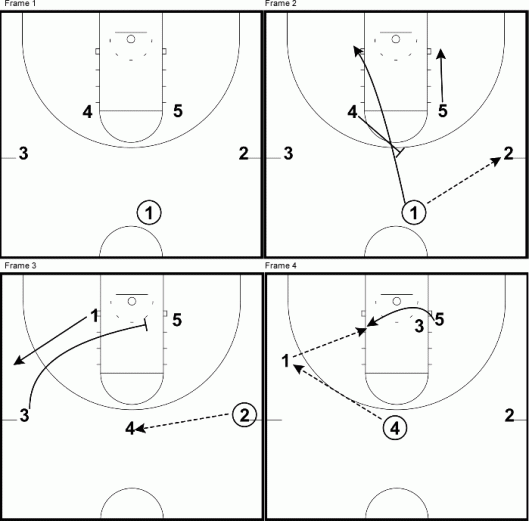Tags
Jim Saia, New Mexico, Oregon State, Paul Halupa, Ralph Miller, secondary offense, Steve Lavin, UCLA, Yankee
Like Yankee (and most of the great things in coaching), we stole 2-Game from someone else and worked hard to make it our own.
Ralph Miller was at Oregon State running the original version that we saw, liked, and decided to implement at the University of New Mexico. We went to some of his practices, and had his assistants come to UNM and help us with our practices until we had a firm grasp of the teaching points.
The best thing we did was get a brilliant high school coach, named Paul Halupa to spend a lot of time with us. He is a genius in a lot of areas, especially basketball, and he knew Ralph’s system better than Ralph knew it.
We implemented and ran the 2-Game offense from that point forward, and years later, while playing one of Ralph’s Oregon State teams, we shot 81.3% from the field for an entire game. As we walked off the floor after the game, Ralph joked that he, “…had powder burns on his jacket from our shooting so well.”
I see the 2-Game pop up around the country every year, and love seeing the tweaks that other coaches come up with. Most notably, I have seen Steve Lavin run it. One of my former assistants, Jim Saia introduced it to him at UCLA. Lavin even mentioned Coach Miller and I in an interview back in 2002.
The diagram below gives you an introduction to the basic alignment and initial actions of 2-Game:
- Frame 1 – Wings must be high (hash mark was a good point of reference). Spacing is key. We start any action by passing to the wing or post on either side.
- Frame 2 – On a pass to the wing, 4 and 5 work up and down the lane, and sometimes cross. In this action the 4 back screens for 1 cutting to the basket. If open, 1 should call for the ball by putting a hand up. 5 is looking to pin the defender for a quick post up.
- Frame 3 – If 1 and 5 are not open, 2 swings the ball to 4 at the top. As that pass occurs, 1 cuts to the wing and sets a lane screen for 5.
- Frame 4 – 4 quickly reverses the ball to 1 who looks inside for 5 coming off of the lane screen and posting up. All of these passes must be quick and precise (no bounce passes!).
That should get you started thinking through 2-Game. In Part 2, we will go into greater detail regarding the Post Series and Specials we ran.


You must be logged in to post a comment.